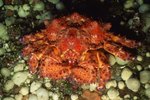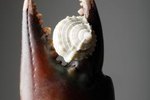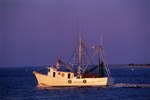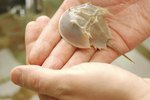About 40 different species of king crab exist, according to the Alaskan King Crab website. Alaskan king crabs consist of golden, blue and red king crabs. The Alaskan king crabs' deep ocean-floor habitat provides them with food and shelter, while shallow waters serve as mating grounds.
Geography
King crabs are found in the cold Pacific and Arctic ocean waters surrounding the coasts of Japan, Alaska, Russia and British Columbia in Canada. King crabs also have been introduced to the northern waters of the Atlantic Ocean near Russia. King crabs migrate to shallow ocean waters each year exclusively to mate.
Prey and Predators
Larval Alaskan king crabs feed on microscopic aquatic plants and animals found floating in the shallow ocean waters. Juvenile crabs feed on algae, worms and clams in slightly deeper waters. Adult crabs feed on smaller crabs, snails and barnacles at the sandy bottoms of ocean floors. Vulnerable juvenile crabs avoid predation by hiding in habitats such as rock crevices and kelp forests in shallow waters.
Habitat Characteristics
Red king crabs typically inhabit shallow coastal waters less than 200 feet deep with flat terrain, such as in Bristol Bay off southwestern Alaska, although they travel as deep as 650 feet. Blue crabs also live in waters about 200 feet deep, often found off the Pribilof Islands and St. Matthews Island in the Bering Sea. Golden king crabs travel deeper, such as around the Aleutian and Adak islands, where they live as deep as 1,600 feet. However, they tend to stay in waters between 650 and 1,300 feet. Golden king crabs prefer habitats composed of soft corals and boulders, while blue and red king crabs prefer sandy or muddy ocean floors.
Mating
When mating time arrives, Alaskan king crabs leave the depths of the ocean to travel to shallow waters less than 150 feet deep. Female king crabs release pheromones to attract males to mate. Mating occurs in late winter and early spring. Females lay a clutch of 150,000 to 400,000 eggs each year, according to the University of Wisconsin-La Crosse.
References
Resources
Writer Bio
Amanda Williams has been writing since 2009 on various writing websites and blogging since 2003. She enjoys writing about health, medicine, education and home and garden topics. Williams earned a Bachelor of Science in biology at East Stroudsburg University in May 2013. Williams is also a certified emergency medical technician.





